السيد لوي (Lv) هو الرئيس التنفيذي، وهو المسؤول عن ضمان جودة كل مقال ننشره.
ما هو خط الغسيل البلاستيكي؟
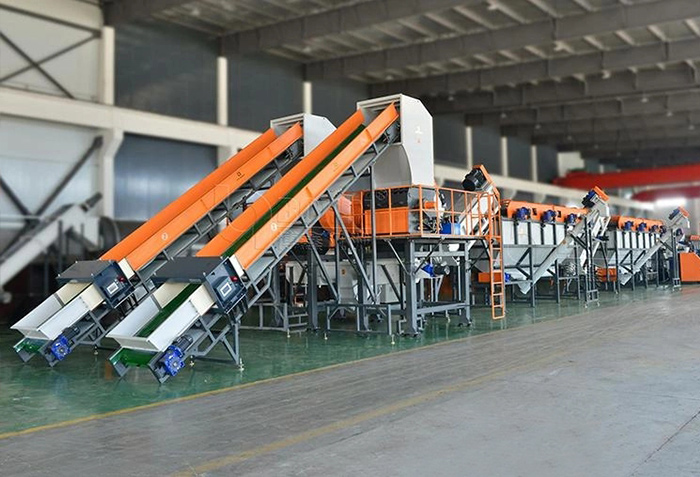 |
خط الغسيل البلاستيكي هو نظام صناعي مصمم خصيصا لإعادة تدوير النفايات البلاستيكية بعد الاستهلاك وما بعد الصناعة. يزيل الملوثات المختلفة من البلاستيك - مثل الشوائب الصلبة (مثل الرمل والمعادن والزجاج) والمخلفات السطحية (مثل الملصقات والزيوت والمواد اللاصقة) - من خلال سلسلة من تقنيات المعالجة الميكانيكية والفصل الفيزيائي. والنتيجة النهائية هي رقائق بلاستيكية معاد تدويرها عالية النقاء ومنخفضة الرطوبة أو إعادة طحن مناسبة لإعادة الاستخدام. |
يشتمل خط الغسيل القياسي عادة على مراحل المعالجة الأساسية مثل التقطيع ، والغسيل المسبق ، وفصل الكثافة ، والغسيل بالاحتكاك ، والغسيل الساخن ، والشطف ، والتجفيف. تم تصميم كل خطوة بدقة لضمان الإزالة الفعالة لكل من الملوثات السطحية والمدمجة. بالإضافة إلى ذلك ، يمكن دمج تقنيات الفرز المتقدمة مثل الفرز البصري وفصل التيار الدوامي لزيادة تحسين اتساق ونقاء المخرجات المعاد تدويرها.
كجزء مهم من عملية إعادة تدوير البلاستيك ، فإن خطوط الغسيل مناسبة للمواد أحادية النوع مثل PET و PE و PP و HDPE و ABS. بدون الغسيل والفصل الفعالين ، لا يمكن للنفايات البلاستيكية تلبية متطلبات الجودة لعمليات المصب مثل البثق أو التكوير أو القولبة بالحقن أو نفخ الفيلم. لذلك ، فإن خط الغسيل البلاستيكي المصمم جيدا لا يعزز جودة البلاستيك المعاد تدويره فحسب ، بل يؤثر أيضا بشكل مباشر على استقرار إنتاج وأداء المنتجات النهائية في المراحل التالية.
تدفق عملية خط الغسيل البلاستيكي
.gif)
ملاحظه: عملية الغسيل وإعادة التدوير لزجاجات PET أكثر تعقيدا. ينطبق هذا المخطط الانسيابي فقط على إعادة تدوير البلاستيك اللين أو الصلب من نوع واحد.
التكسير والغسيل المسبق
عملية التكسير: يتم نقل نفايات البلاستيك بواسطة حزام إلى الكسارة وتقطيعها إلى أحجام مناسبة للغسيل.
الغسيل المسبق: يدخل البلاستيك المطحون إلى نظام الغسيل المسبق ، حيث يزيل الغسيل الهيدروليكي أو الغسيل بالاحتكاك أو فصل التعويم الملوثات الكبيرة ، مما يقلل من تآكل المعدات النهائية ويحسن كفاءة الغسيل.
عمليات الغسيل الرئيسية (فصل الكثافة ، الغسيل الساخن ، الغسيل بالاحتكاك)
فصل الكثافة (التعويم): باستخدام تقنية فصل الطفو المائي ، يتم فصل البلاستيك ذو الكثافات المختلفة عن الشوائب غير البلاستيكية (مثل أغطية الزجاجات والملصقات والجزيئات المعدنية) لتحسين النقاء.
عملية الغسيل الساخن: بالنسبة للبلاستيك الذي يحتوي على تلوث بالزيت الثقيل وبقايا لاصقة (مثل رقائق PET) ، يتم تطبيق الغسيل القلوي بدرجة حرارة عالية والمعالجة بالبخار لإزالة البقع والروائح العنيدة.
غسيل الاحتكاك: يدخل البلاستيك إلى غسالة الاحتكاك حيث تزيل الشفرات الدوارة عالية السرعة الزيوت السطحية والمواد اللاصقة والشوائب الدقيقة لتحسين النظافة.
التجفيف والتخزين
الجفاف بالطرد المركزي: يمر البلاستيك عبر مجفف طرد مركزي عالي السرعة لإزالة رطوبة السطح ، مما يقلل عادة من محتوى الرطوبة إلى ≤5٪.
التجفيف بالهواء الساخن: يقلل الرطوبة إلى 3٪ ؛ يمكن لبعض المواد البلاستيكية (مثل البلاستيك اللين PE / PP) استخدام مجفف الطارد مباشرة لضمان أن التحكم في الرطوبة يفي بمعايير إعادة التدوير المثلى.
تخزين المنتج النهائي: يمكن تعبئة المنتجات المصنعة مباشرة للتخزين أو توصيلها بأنظمة التكوير لمزيد من المعالجة (مثل البثق الذائب أو القولبة بالحقن).
المكونات الرئيسية لخط الغسيل البلاستيكي
يعتمد تكوين المعدات لخط الغسيل البلاستيكي على نوع المواد المعالجة ومستويات التلوث ومتطلبات إعادة التدوير النهائية.
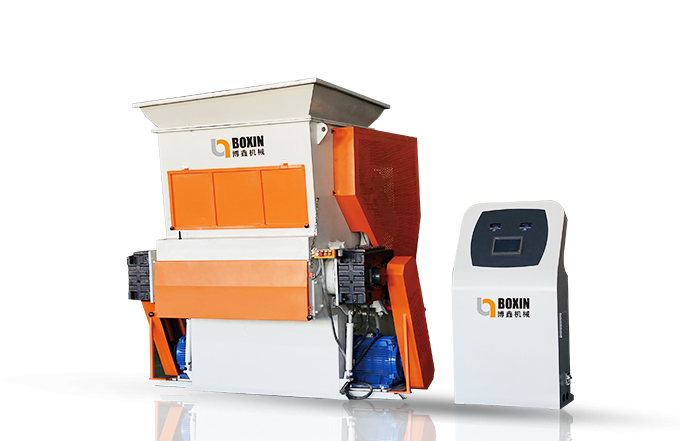 |
التقطيع:قم بتمزيق العناصر البلاستيكية الكبيرة إلى قطع أصغر مناسبة للمعالجة اللاحقة (100 مم ~ 200 مم). |
 |
محطم:يسحق العناصر البلاستيكية إلى رقائق دقيقة بحجم موحد (8 مم ~ 20 مم). |
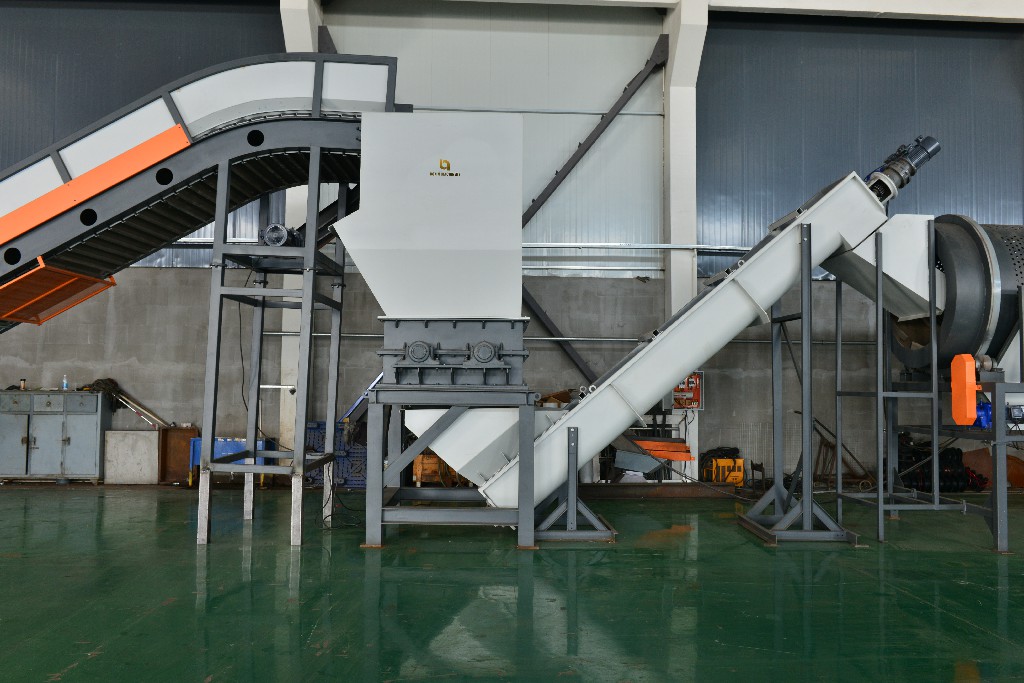 |
فتاحة البالات (أفقي / رأسي):تستخدم للمواد المجمعة لفصل المواد القابلة لإعادة التدوير المضغوطة. |
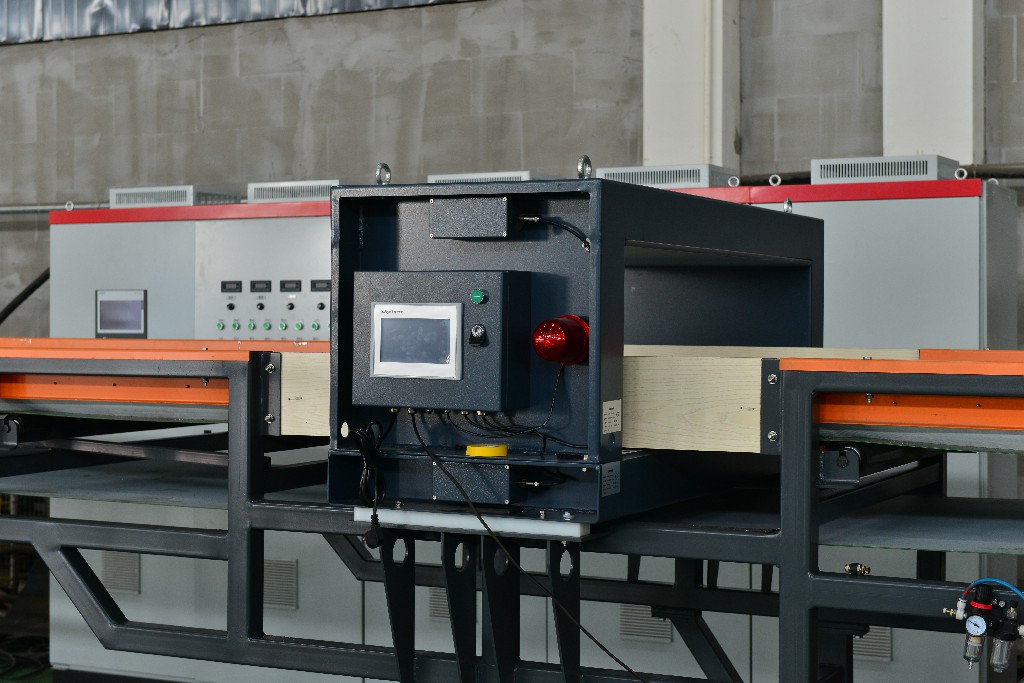 |
فاصل المعادن(كاشف المعادن / فاصل الأسطوانة المعدنية / رفرف هوائي أوتوماتيكي بالكامل): يستخرج أي ملوثات معدنية. |
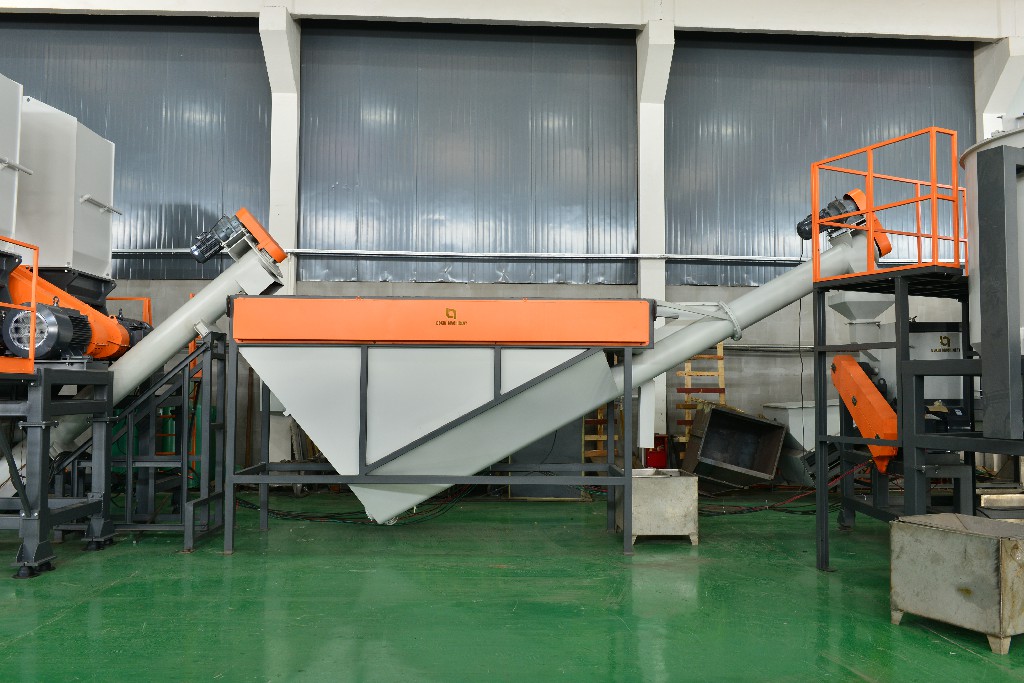 |
خزان تعويم المغسلة:(خزان بالوعة / خزان عائم) يستخدم الغمر والتعويم للتمييز بين المواد حسب الكثافة. |
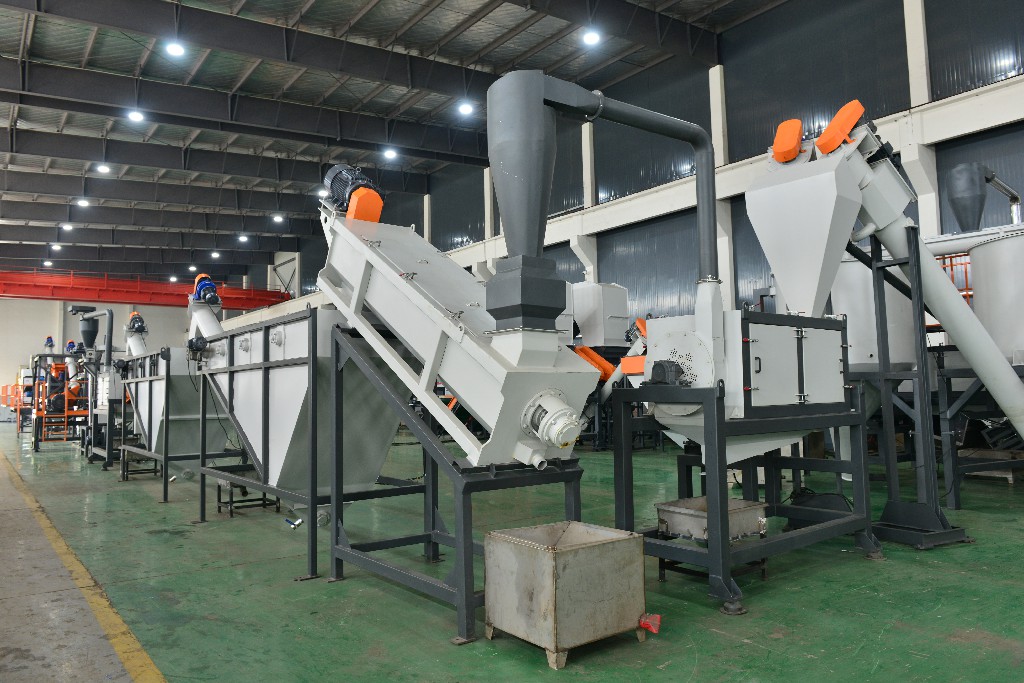 |
غسالة الاحتكاك:(سرعة عالية / منخفضة السرعة) يستخدم شفرات مدفوعة بمغزل للتأثير على الأسطح البلاستيكية ، مما يوفر تنظيفا قويا أوليا. |
 |
الغسيل الساخن:يزيل البقع العنيدة مثل أغشية الزيت والمواد اللاصقة. |
 |
مجفف الطرد المركزي:يزيل الرطوبة الزائدة من البلاستيك باستخدام قوة الطرد المركزي. |
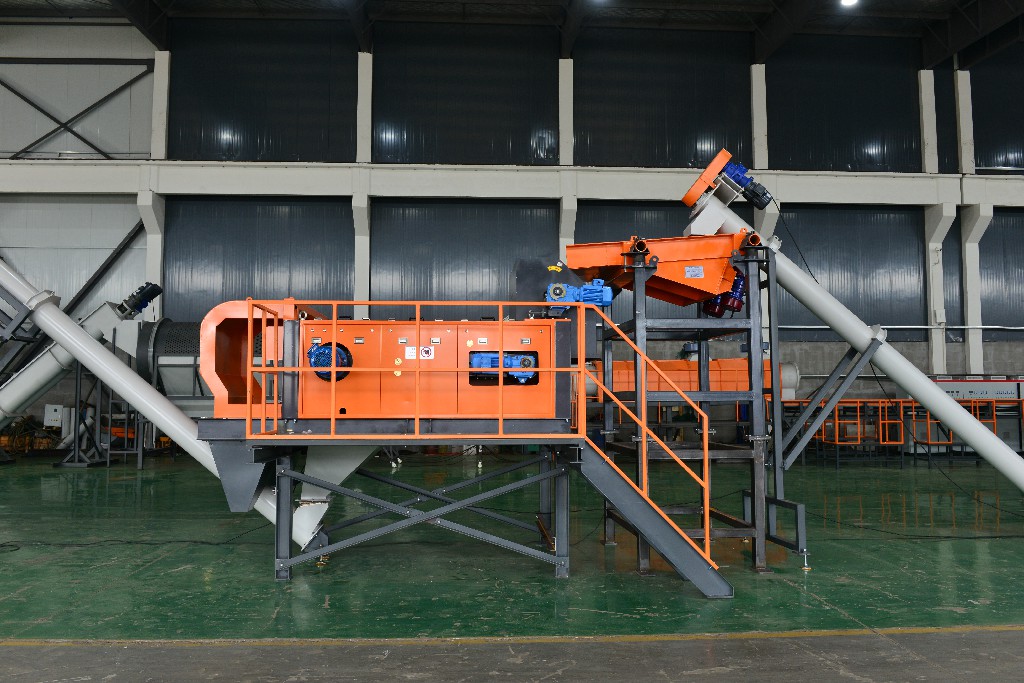 |
فاصل التيار الدوامي:يزيل معادن الألومنيوم بشكل أساسي. |
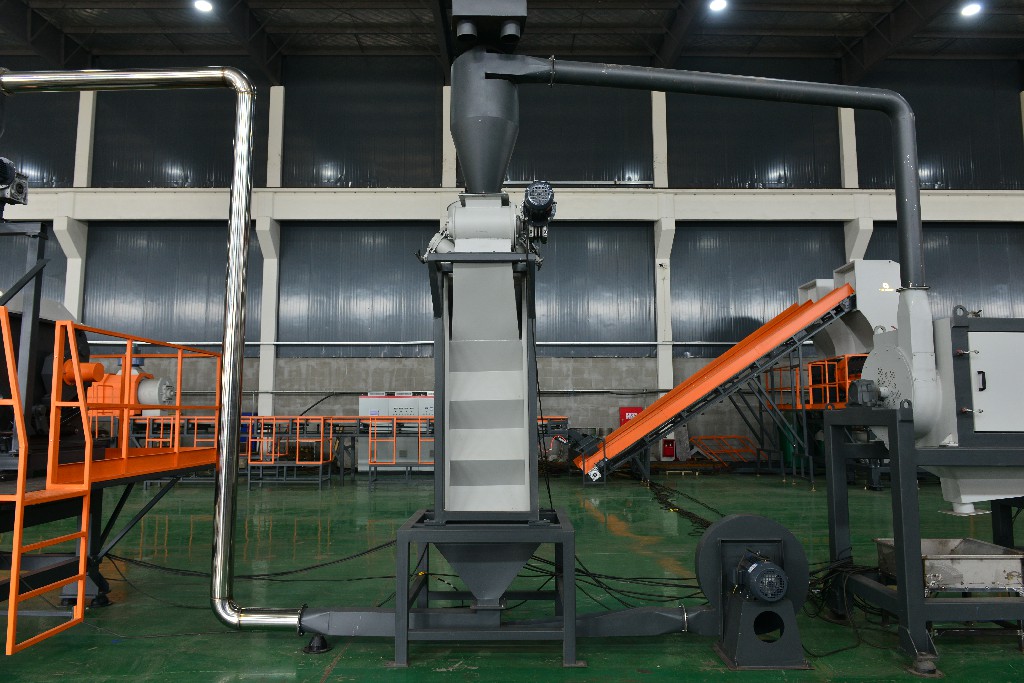 |
مستخرج الملصق:(فاصل مسنن / فاصل الجسيمات الدقيقة) يعمل على تحسين فصل المواد عن طريق إزالة الجسيمات الدقيقة وشظايا الملصقات والغبار وما إلى ذلك. |
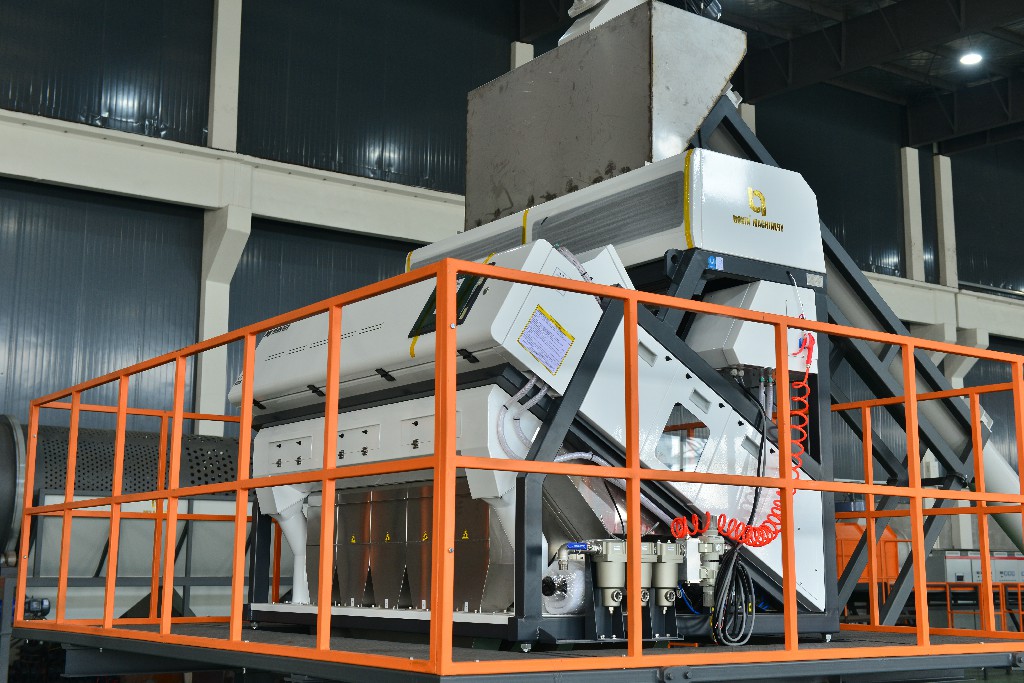 |
الفرز البصري:(فرز المواد ، فرز الألوان ، فرز التقشر القديم) تستخدم لرقائق PET عالية الجودة. |
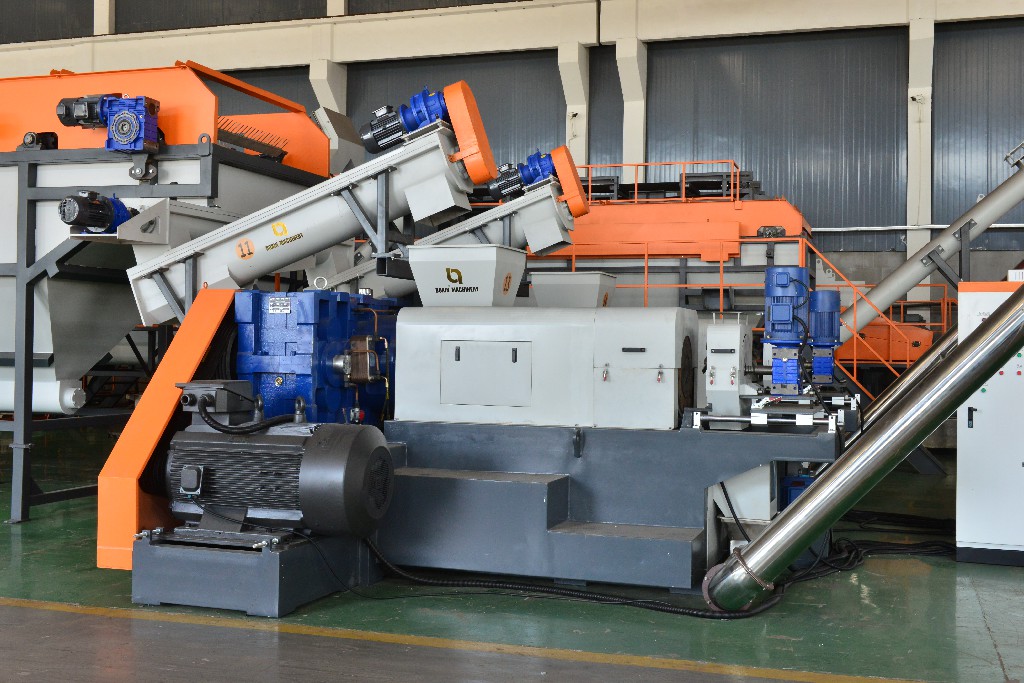 |
عصاره:يزيل الرطوبة من البلاستيك الناعم ويزيدها جزئيا. |
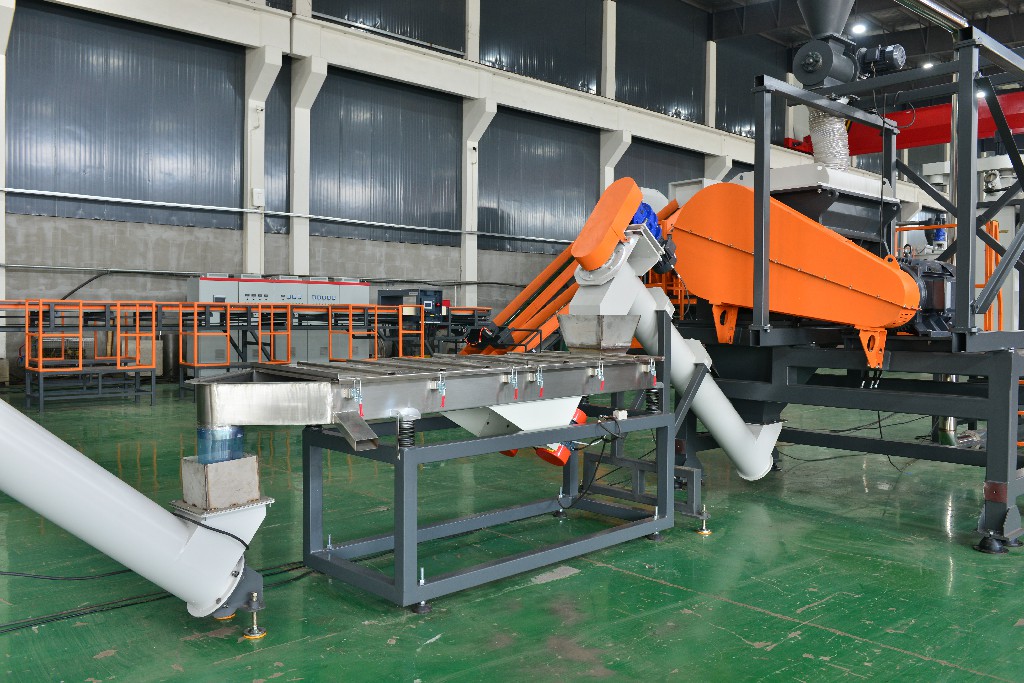 |
شاشة تهتز:يشيع استخدامها للبلاستيك الصلب لإزالة المواد الأصغر من 10 مم عن طريق الاهتزاز. |
فوائد استخدام خطوط الغسيل البلاستيكية
من المتوقع أن ينمو سوق إعادة تدوير البلاستيك العالمي إلى 1.2 تريليون دولار بحلول عام 2040 (التوقعات العالمية للبلاستيك)يعكس هذا النمو الزخم الذي تمنحه السياسات الحكومية واللوائح البيئية واحتياجات استدامة الشركات لصناعة إعادة تدوير البلاستيك.
تأثير إعادة تدوير البلاستيك على انبعاثات
الكربون وفقا لدراسة أجرتها وكالة البيئة الأوروبية (EEA 2023) عام 2023 ، تقلل صناعة إعادة تدوير البلاستيك من انبعاثات ثاني أكسيد الكربون بمقدار 250 مليون طن سنويا ، أي ما يعادل إخراج 53 مليون سيارة من الطريق لمدة عام واحد.
تعمل خطوط الغسيل البلاستيكية على تحسين كفاءة
إعادة التدوير وفقا لدراسة أجرتها شركة Plastics Recyclers Europe عام 2023 (PRE 2023) ، يمكن أن يؤدي تحسين خطوط الغسيل البلاستيكية إلى زيادة معدل إعادة تدوير البلاستيك اللين HDPE و PP بنسبة 30٪ ، وتقليل نفايات المواد الخام ، وتحسين جودة الكريات المعاد تدويرها.
كيفية اختيار خط الغسيل البلاستيكي المناسب لك
تختلف عمليات إعادة التدوير باختلاف أنواع النفايات البلاستيكية ، وتختلف المصطلحات وفقا لذلك. بناء على خصائص المواد ، يتم تصنيف خطوط الغسيل البلاستيكية بشكل عام إلى ثلاثة أنواع رئيسية: خطوط غسيل زجاجات PET ، وخطوط الغسيل البلاستيكية الناعمة ، وخطوط الغسيل البلاستيكية الصلبة.
يمكن تقسيم خطوط غسيل زجاجة PET حسب نوع المنتج النهائي:
(خط غسيل رقائق الألياف ؛ خط غسيل رقائق الصف خيوط ؛ خط غسيل رقائق الغذاء)
يتم تصنيف خطوط الغسيل البلاستيكية الناعمة وفقا للمواد المعاد تدويرها:
(خط غسيل الأفلام ، خط غسيل الأكياس المنسوجة ، خط غسيل الأكياس الجامبو ، إلخ.)
تنقسم خطوط الغسيل البلاستيكية الصلبة حسب نوع المادة:
(خط غسيل زجاجات الحليب HDPE ، خط الغسيل أحادي المادة ، خط الغسيل بالمواد المختلطة ، خط غسيل البلاستيك المنزلي ، إلخ.)
| عنصر المقارنة | خط غسيل زجاجة PET | خط غسيل البلاستيك الناعم | خط غسيل البلاستيك الصلب |
| المواد القابلة للتطبيق | زجاجات بلاستيكية PET (زجاجات المياه المعدنية ، زجاجات المشروبات الغازية ، زجاجات زيت الطهي ، إلخ) | فيلم PE ، أكياس منسوجة PP ، أفلام زراعية ، أكياس بلاستيكية ، أكياس جامبو ، إلخ. | HDPE و PP و ABS و PS وغيرها من المواد البلاستيكية الصلبة مثل صناديق الدوران والأنابيب والبراميل البلاستيكية وأغلفة الأجهزة |
| الملوثات الرئيسية | ملصقات PVC ، أغطية الزجاجات ، الغراء ، بقع الزيت ، الودائع | الطين والغبار والغراء | المعادن وبقع الزيت |
| تدفق العملية | تفريغ → فحص الأسطوانة → إزالة المعادن → إزالة الملصق → الغسيل المسبق → التكسير → الغسيل بالاحتكاك → الغسيل الساخن → فصل التعويم → الجفاف بالطرد المركزي → فرز → التجفيف بالرقائق | التكسير / التقطيع → الغسيل المسبق → الاحتكاك الغسيل → فصل التعويم → الضغط / نزح المياه | التكسير / التقطيع → الغسيل المسبق → فصل التعويم → الغسيل بالاحتكاك → الغسيل الساخن → الجفاف والتجفيف |
| المعدات الأساسية | آلة التفريغ ، مزيل الملصقات ، غسالة الاحتكاك ، الغسالة الساخنة ، خزان التعويم ، غلاية الطهي ذات درجة الحرارة العالية ، مجفف الطرد المركزي | آلة التقطيع / الكسارة ، غسالة الاحتكاك ، خزان التعويم ، آلة الضغط | كسارة ، خزان تعويم ، غسالة احتكاك ، مجفف طرد مركزي |
| دقة الغسيل | أعلى (معيار من الدرجة الغذائية ، مناسب للأغذية وكريات البولي إيثيلين تيريفثالات المعاد تدويرها من الدرجة الليفية) | متوسط (بشكل أساسي لإعادة تصنيع الحبيبات البلاستيكية) | متوسط (مناسب للقولبة بالحقن والمواد المعاد تدويرها من الدرجة الأنابيب) |
| استخدامات ما بعد إعادة التدوير | يمكن استخدام رقائق RPET لإنتاج الألياف وتغليف المواد الغذائية والمنتجات البلاستيكية | يمكن استخدام PE / PP المعاد تدويره في التكوير ، ونفخ الفيلم ، والقولبة بالحقن ، وما إلى ذلك. | مناسبة للقولبة بالحقن ، القولبة بالنفخ ، وإنتاج الألواح |
| التحكم في الرطوبة | ≤ 1٪ (من الدرجة الغذائية) | ≤ 5٪ | ≤ 3٪ |
| السعة النموذجية | 500 كجم / ساعة - 5000 كجم / ساعة | 300 كجم / ساعة - 3000 كجم / ساعة | 500 كجم / ساعة - 5000 كجم / ساعة |
| تكلفة الاستثمار | أعلى (يتطلب غسل PET من الدرجة الغذائية طهيا بدرجة حرارة عالية وفرز بصري) | المعتدل | المعتدل |
| الصناعات المعمول بها | إعادة تدوير زجاجات المشروبات ، تغليف المواد الغذائية ، إنتاج الألياف الكيماوية | أكياس بلاستيكية ، أفلام زراعية ، صناعة التعبئة والتغليف | إعادة تدوير الأجهزة ، إعادة تدوير بلاستيك السيارات ، إعادة تدوير البلاستيك الصناعي ، الصناعة الكيميائية |

 SA
SA 
 English
English 简体中文
简体中文 Русский
Русский España
España عرب .
عرب .
